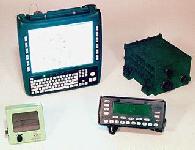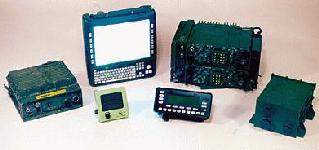






The Army is developing and fielding a system for use by commanders and staffs of tactical maneuver units, using a blocked approach. Block II—using Version 10 software running on NDI hardware—is currently fielded to all heavy corps and divisions except the 3rd Mechanized Division. The software for Block III is titled MCS/PHOENIX (MCS/P), since functionality from an experimental program named PHOENIX is being merged into the MCS Version 12.01, the software version currently under development. Block III software will be tested and fielded on Common Hardware and Software (CHS)-2 in FY1996-97. Block IV software will be developed and delivered under a 5-year contract scheduled for award in FY1996. A change to the system name is currently under consideration to reflect recent evolutionary changes in battle command philosophy.
MCS/P will distribute tactical information on the battlefield, allowing a commander to readily access and display current situation reports, intelligence, and contact reports that assess enemy strength and movement, as well as the status of friendly forces.
Through MCS/P, the commander can transmit critical battlefield information such as mission information; courses of action; schemes of maneuver; warning and operations orders; changes in priorities; and intelligence, fire support, supply status, and air operations requests. MCS/P assists the commander in applying combat power at the appropriate time and place in response to changing battlefield dynamics. In addition, it allows the commander sufficient flexibility to act preemptively to developing situations.
MCS/P databases maintain and display critical situation awareness information on friendly and enemy forces in both text and graphic formats, using data obtained from MCS/P and other BFACS. Using MCS/P decision support graphics—which include map overlays and battle resources by unit—possible courses of action are analyzed, the appropriate course of action is determined, and MCS/P is used to prepare and send warning orders, operations orders, and related annexes.
Exchange of information using MCS/P gives all command posts from battalion through corps the same common picture of the battlespace. Commanders can make decisions that mesh with the decisions and capabilities of other commanders in the network. With the ability to query both local and remote databases, MCS/P also assists in synchronizing the battle.
The MCS/P effort involves the transition of PHOENIX application software modules from the PHOENIX ACT II project into the MCS/P system in preparation for the TF XXI AWE. The procedure for transitioning PHOENIX application software modules is a three-phase process:
Non-compliant but essential PHOENIX application software modules will be incorporated as evolutionary insertions as they become COE-compliant. Application modules having common functionality within MCS Version 12 and PHOENIX will be consolidated into the MCS/P system. The unified MCS/P functionality will be exercised at Prairie Warrior 96, in a follow-on IOTE, and during the Force XXI AWEs.



